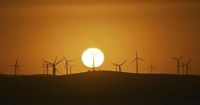Australia has thrown down an ambitious new gauntlet in the global fight against climate change, announcing on September 18, 2025, a sweeping target to reduce its greenhouse gas emissions by between 62% and 70% below 2005 levels by 2035. Prime Minister Anthony Albanese, who leads the center-left Labor Party, unveiled the plan with a mix of optimism and pragmatism, promising to take the proposal to the United Nations General Assembly next week. The new goal builds on Australia’s existing commitment to cut emissions by 43% by 2030 and to achieve net-zero emissions by 2050.
“This is a responsible target, backed by the science, backed by a practical plan to get there and built on proven technology,” Albanese told reporters at a press conference, as quoted by the Associated Press. “It’s the right target to protect our environment, to protect and advance our economy and jobs and to ensure that we act in our national interest and in the interest of this and future generations.”
Australia’s new target will become its Nationally Determined Contribution (NDC) under the Paris Agreement, the global pact that requires countries to update their climate action plans every five years with increasing ambition. The government’s Net Zero Plan, released alongside the announcement, lays out a roadmap to reach the 2035 goal and the ultimate 2050 net-zero ambition. This plan includes six sector-specific emissions reduction strategies, covering Electricity and Energy, Agriculture and Land, Built Environment, Industry, Resources, and Transport.
Key priorities in the plan include expanding renewable electricity generation—think more wind and solar farms—along with new transmission and storage capacity. There’s also a push to electrify more of the economy, with a new vehicle efficiency standard and incentives to help consumers switch to electric vehicles. The government wants to grow a low-carbon liquid fuels industry, support green hydrogen, and invest in new clean technologies. Land-based carbon removal, such as reforestation, is highlighted as the most cost-effective way to balance out emissions that can’t be eliminated through other means.
Backing up these ambitions is a hefty financial commitment: over $8 billion (USD) in new climate-related investments. This includes a $5 billion Net Zero Fund to help industrial facilities decarbonize and scale up renewable energy, $2 billion for the Clean Energy Finance Corporation, $1.1 billion for clean fuels production, and further investments targeting fast EV charging, improved household energy performance, and even decarbonization efforts by sports clubs.
Matt Kean, chair of the Climate Change Authority, which advises the government on climate policies, lauded the new target. According to the Associated Press, Kean described it as demonstrating “a higher ambition than most other advanced economies.” Albanese himself emphasized that the target is consistent with the European Union’s own reduction range of 63% to 70% below 1990 levels, suggesting Australia is moving in step with other major economies.
But if you think this new target has united the nation, think again. The announcement has sparked a fierce debate, with critics on both sides of the political spectrum. Environmental groups and climate campaigners were quick to argue that the target doesn’t go far enough. Many had pushed for a reduction exceeding 70%, saying that anything less would fail to address the urgent threat of global heating. According to The Guardian, Greens leader Larissa Waters was particularly scathing, describing the 62% target as “appallingly low.” She told the Australian Broadcasting Corporation, “Labor have sold out to the coal and gas corporations with this utter failure of a climate target.” Waters warned that without tougher action on coal and liquefied natural gas exports—areas where Australia is among the world’s largest players—dire climate risk scenarios, including mass flooding and species extinction, could come to pass.
Independent senator David Pocock echoed these concerns, saying the targets did not go far enough to address the major threat of climate change. Climate campaigners, according to The Guardian, insisted that the Albanese government’s target, while described by officials as the “maximum level of ambition,” actually falls short of what Australia should be doing to combat global warming.
On the other side, business groups and conservative politicians have their own reservations. The Australian Chamber of Commerce and Industry’s chief executive, Andrew McKellar, called the 2035 target “ambitious” but stressed the need for energy security and affordability. “One of the biggest issues that industry faces at the moment is the costs that we incur in terms of energy. We’ve got to have a sustainable pathway forward. We’ve got to have energy security and we’ve got to have energy affordability as well,” McKellar told reporters, as reported by the Associated Press.
The conservative opposition Liberal Party, which has lost the last two federal elections, is reportedly considering abandoning its own net-zero by 2050 commitment. Opposition leader Sussan Ley slammed the government’s 2035 target as not credible, calling it “fantasy” and doubting that the government will even meet its 2030 goal. “These targets cannot be met. They are fantasy: we know, Australians know, and they’re very disappointed in this prime minister,” Ley said, according to the Associated Press. She also expressed deep concern about how much the plan would cost ordinary Australians and questioned the details of how it would be implemented.
Despite the political squabbling, the government insists Australia is on track to narrowly achieve its 2030 target. The Net Zero Plan outlines not only the technical pathways but also the financial tools to help industries and households transition smoothly. The establishment of the $5 billion Net Zero Fund, for example, is designed to help industrial facilities decarbonize without sending jobs or companies offshore—a concern raised by business groups wary of losing billions in exports if targets are set too high.
As Australia prepares to present its new climate ambitions on the world stage at the U.N. General Assembly, the stakes couldn’t be higher. The country is no stranger to the devastating impacts of climate change, from catastrophic bushfires to record-breaking heatwaves and flooding. The battle lines are drawn: environmentalists and Greens say the target is too weak, business groups and conservatives warn of economic risks, and the government tries to chart a middle course it calls “responsible” and “science-backed.”
With the world watching, Australia’s next steps on climate will be closely scrutinized—by its own citizens, by global partners, and by future generations who will live with the consequences of today’s decisions.






